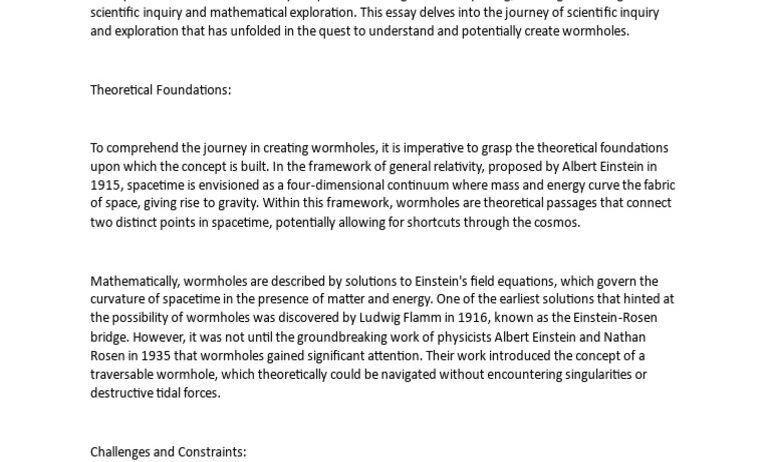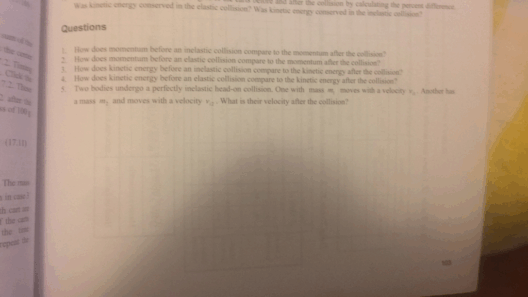Wormholes, often described as shortcuts through the fabric of space and time, have captured the imagination of physicists, futurists, and science fiction enthusiasts alike. Predicated on solutions to Einstein’s equations of general relativity, these fascinating structures propose an alternative method of traversing vast cosmic distances. The allure of wormholes extends beyond mere interstellar travel; it prompts profound inquiries into fundamental physical laws, particularly the law of energy conservation. This article delves into whether the theoretical existence of wormholes could lead to violations of energy conservation, reshaping our understanding of the cosmos.
The law of energy conservation is a cornerstone of physics, stating that energy cannot be created or destroyed, only transformed from one form to another. This principle dictates that the total energy of an isolated system remains constant over time. When discussing wormholes, one must first comprehend how these entities theoretically function. A wormhole connects disparate points in space, potentially allowing for instantaneous travel between them. This raises the tantalizing question: could traversing a wormhole permit the alteration of energy states in ways previously deemed impossible?
At the core of the wormhole concept lies the two-dimensional concept of spacetime. Einstein framed gravity as the warping of spacetime, yielding the remarkable prediction of wormholes as valid cosmic structures. However, several caveats accompany their existence. For one, the stability of a wormhole is a pertinent concern, necessitating exotic matter—substances with negative energy density—to keep the mouth of the wormhole open. This requirement implies that traversing a wormhole would necessitate energy resources not readily available, complicating the matter of energy conservation.
Exotic matter itself is an enigma. Theoretical physics suggests that such matter might exist in specific conditions, but it has yet to be observed or synthesized. Furthermore, should exotic matter become viable for stabilizing wormholes, it leads to a critical inquiry: Does utilizing exotic matter to propel energy through the wormhole create a net energy gain or loss? In scenarios where mass enters a wormhole, the implications could be profound.
Consider a hypothetical instance wherein a spacecraft enters a wormhole, traversing vast distances in mere moments. In this scenario, the spacecraft’s energy would ostensibly be conserved as it enters and exits the wormhole. However, should the wormhole enable instantaneous travel between one point in space to another—let’s say from the outskirts of the Milky Way to a distant galaxy—the question of energy conservation arises anew. If energy is conserved under conventional travel conditions, how does this principle hold when dealing with the wormhole’s inherent nature to bypass conventional spacetime?
To explore this conundrum further, one must entertain the possibility of manipulating time itself through wormholes. The idea of time travel into the past raises significant challenges to the conservation of energy. What occurs if an entity travels back in time and alters events in such a manner that the initial condition of energy within a closed system is disrupted? Would the introduction of this entity into a past timeframe create an excess of energy that wasn’t previously accounted for? These thought experiments expose the delicate interplay between relativity, time, and energy conservation.
Moreover, the concept of energy and the laws governing it may vary under exotic conditions. If wormholes exist within a multiverse framework—where alternate dimensions or universes interact—the laws of physics themselves could change. Energy conservation as it’s understood within our universe may not apply universally across different realities. Thus, further complicating definitive conclusions about energy conservation within the context of wormholes.
Another layer of complexity arises when considering the information paradox presented by black holes, elliptical counterparts to wormholes. If volunteers were able to traverse a wormhole and extract information from one side to the other, it raises questions about the entitlement of that energy. The notion poses a dilemma: does the information extracted represent a drain on the energy of the originating universe? Such considerations beckon a deeper understanding of the fundamental mechanics of energy in a potentially wormhole-rich cosmos.
Furthermore, the implications of energy fluctuations manifested during wormhole transitions merit scrutiny. During rapid entries or exits, could the energy profile of the wormhole induce variances in energy states that momentarily transcend the law of conservation? Engaging with this idea doesn’t merely reside within speculative philosophy; it inspires empirical investigations into quantum mechanics and general relativity—two fields yearning for a unifying theory that could anchor such discussions.
In moving toward a conclusion, one must tread carefully. While wormholes tantalize with promises of cosmic travel and perhaps scenarios that could challenge our understanding of physics, they remain deeply theoretical. Any assertion they violate the law of energy conservation is likewise contingent upon assumptions largely grounded in speculative theory. As our conceptual universe expands and advances in our understanding continue, the quandaries presented by wormholes will remain a topic of vigorous debate within the scientific community.
In summary, wormholes challenge established understandings of energy conservation while remaining firmly anchored in the rich tapestry of theoretical physics. Through a careful examination of exotic matter, temporal implications, and questions about the nature of energy itself, a clearer understanding may emerge—one that potentially reshapes not only our concept of the universe but also our fundamental laws that govern it. The exploration of such topics holds the promise of fuelling not just scientific inquiry, but also a burgeoning curiosity in the cosmos’ vast and enigmatic expanse.








